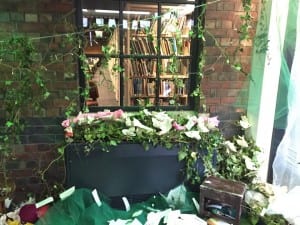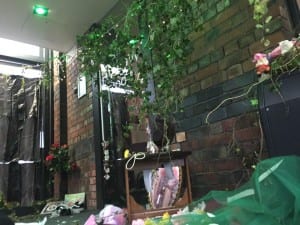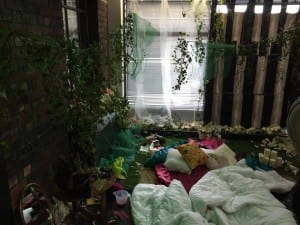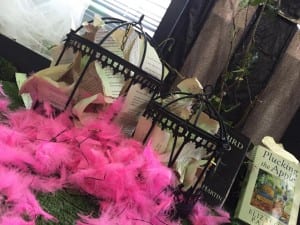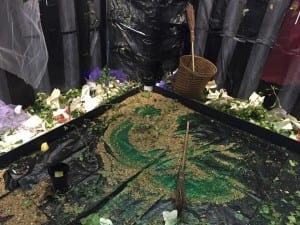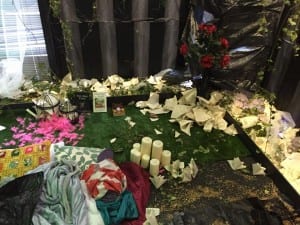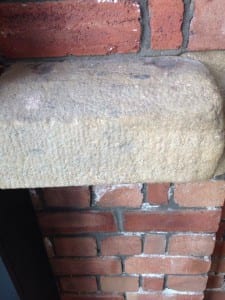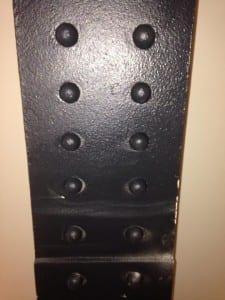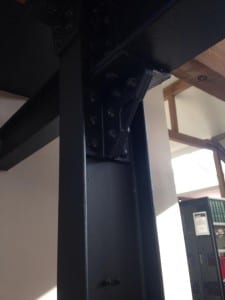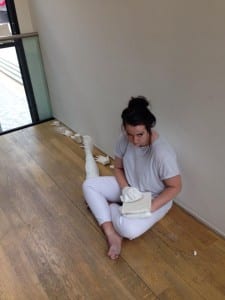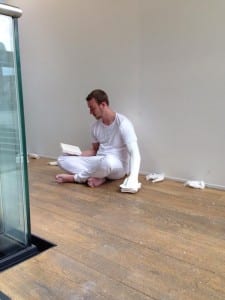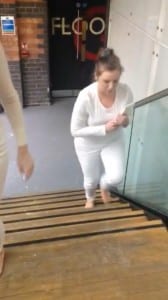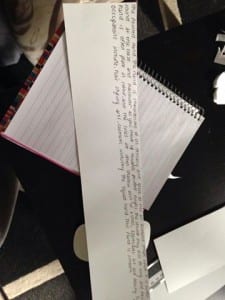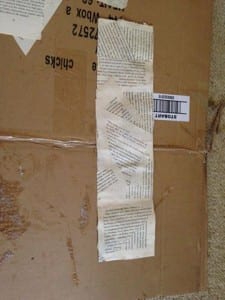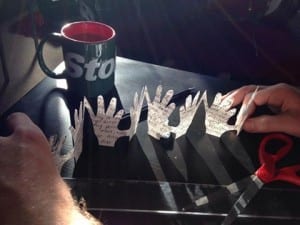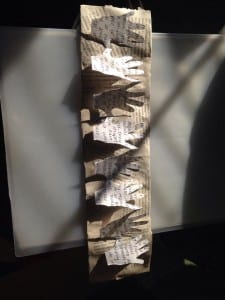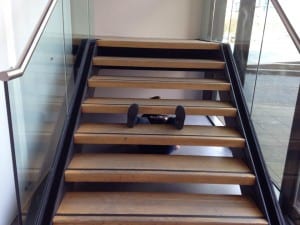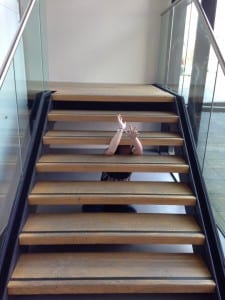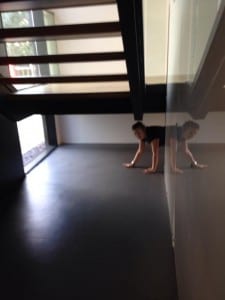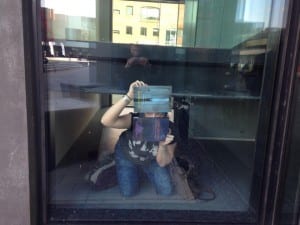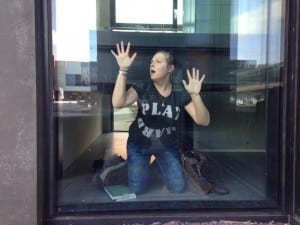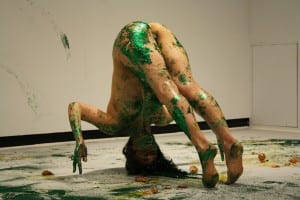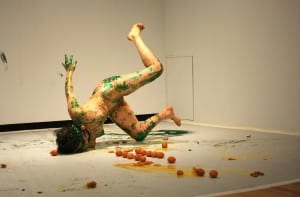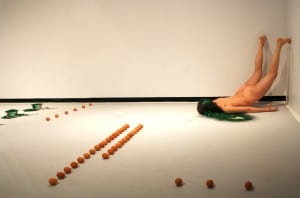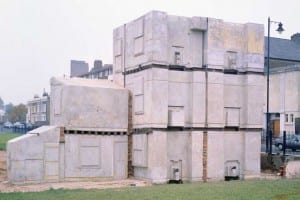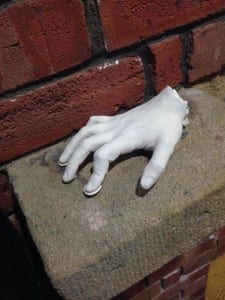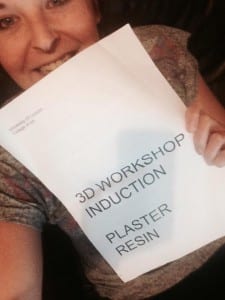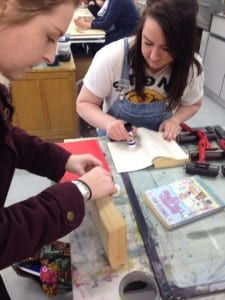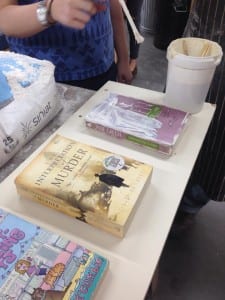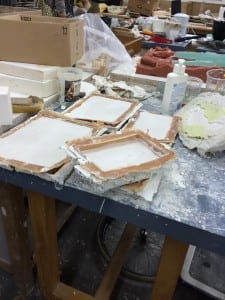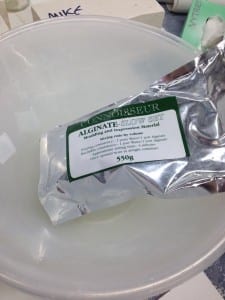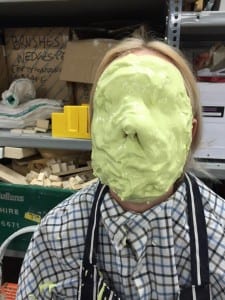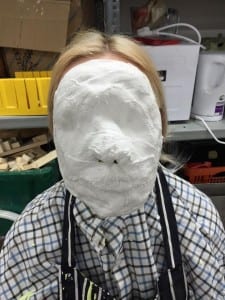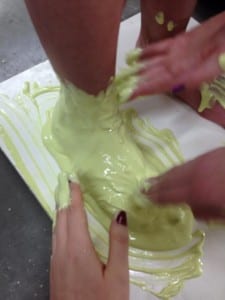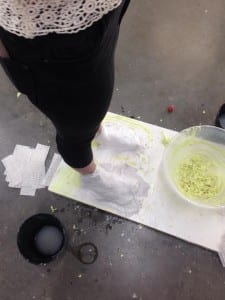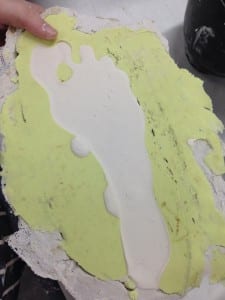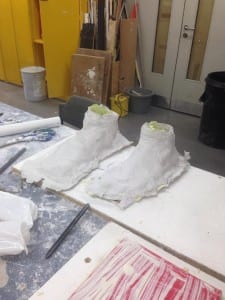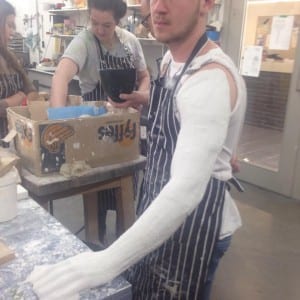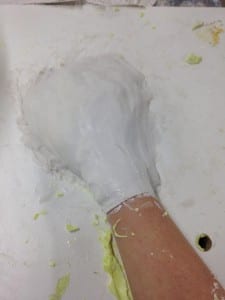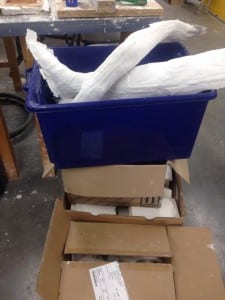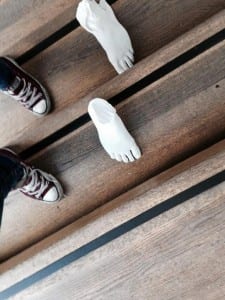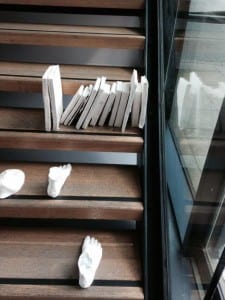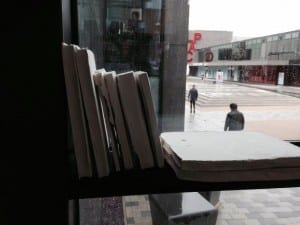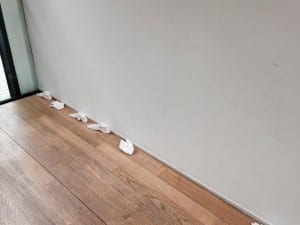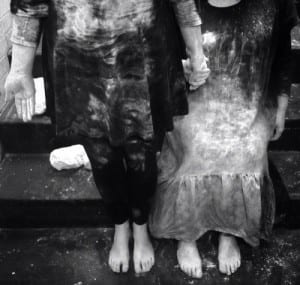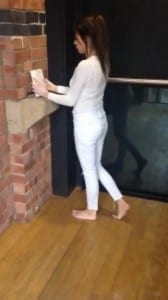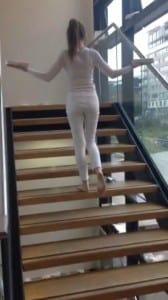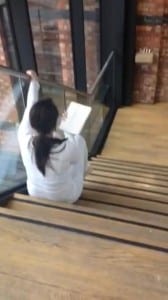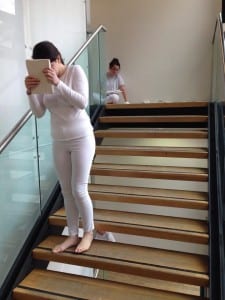101 uses of a Library Trolley
At the advice of Conan and Dan, we decided to change our idea from the Food Shelves to something more manageable. Our idea is, on the day of the performance, our group will complete 101 different uses for the mobile library trolley’s. As there are 4 of us in the group, we have split the list into each of us being in charge of 25 tasks (I drew the short straw and have to do 26 tasks). These tasks range from the simplistic; walking with a trolley, to the bizarre; playing Pacman. Though one person is in charge of organising and planning the task, it may require more than one person to complete the task. Furthermore, some of these tasks will need to be rehearsed and practiced before we do it on the day of the performance. We are hoping that we will be able to complete all 101 tasks on the day, we have estimated that it will take us around 8 hours to do all of them. We will also record each completed task and edit it together as evidence.
- Train Trolley
- Food Trolley
- Jousting
- Car Trolley
- Dodgems
- Create a rowing team
- Funeral of a trolley
- Self-moving trolley
- Curling
- Bowling
- Use it as a canoe
- Surfing
- Steps
- To move the trolley without pushing or pulling
- Trolley conga
- Card game centre
- Follow someone whilst using the trolley as a disguise
- Dancing
- Homemade theatre system
- Safari
- Aeroplane Trolley
- Thumb wrestling arena
- Magic Station
- Tea trolley
- Stationary on the go
- Chair
The initial aim of the performance is to show how we can take an object, in this case a library trolley, and use it in a way that it was not designed for. In our case, 101 ways uses that a library trolley was not design for.
Work in Progress
On the 24th of March, we performed and tried out 8 tasks (2 tasks from each person’s category) in the library in order for us to get a feel on how it would be like on the actual performance day. It also highlighted any potential issues we might encounter on the day.
The Tasks We Did:
– Tetris
– Pushing trolleys around
– Riding around on a trolley
– Writing an essay whilst riding a trolley
– Carrying a trolley up and down the stairs
– Arm Wrestling
– Creating steps to climb over
– Sleeping on a trolley
The feedback we got from the performance was that we needed to be less shy about performing in the library, also we needed to know where in the library we are doing each task, as well as a defined plan for each task. We also realised that the time limit we’ve given for each task (10 minutes) may be too long for some of the tasks. However, after discussing it as a group, we decided that to keep it. The reason is that though it may be long for some of the tasks, the extra time that it gives us could potentially be used as a buffer in case we run into any issues on the day.
Influences
I personally feel our main point of inspiration for this performance is Cie. Willie Dormer’s Bodies in Urban Spaces. What these dancers do is they choose specific locations outside in a busy city, and use their bodies to fill up gaps in architecture or use their bodies to create several interesting shapes and sculptures in locations which pedestrians use or walk past; buildings, steps or market squares.
“By placing the bodies in selected spots the interventions provoke a thinking process and produce irritation.” (Dormer W., 2007).
The performers are only in these locations for a few brief moments before dismantling their creation and running to their next location to create their new “sculpture”. What this means is that the audience (the public) only see these people for a few moments before it has regressed back into the original architecture. Seeing how the performers leave no evidence behind that they were there, except for the audiences memory, this has an effect on how the audience will see that bit of architecture in the future. Next time they walk past that place they will remember the performers using their bodies in an odd position to fill a gap in a building. As these sculptures are created in public and semi-public places, this means that the audience could be anyone. It also means that the unsuspecting public are the audience, and have no choice in the decision. Using no props, other than their bodies, and the local town or city’s architecture as it’s setting and performance space, it appealed to our idea for our performance. We are using the library trolleys, an object that most people see in the library and assume only has one purpose, and do 101 things with it that would make people question it’s function when they see it after our performance.
We also looked at some of Blast Theory’s performances, as most of their work centres around the use of games and involving an air of playfulness with the audience. However we decided against using anything too specific from their performances because we failed to incorporate elements of their work into our performance idea.
Our Meetings and the Final List
Our meetings mainly consist of us going over our list and organising it into: the tasks, when we do that task, any equipment we will need for that task, if a specific trolley is needed for that task, where that particular task will be performed and who will be involved in the task. In many respects, we feel that the creation of the list is as much of the performance as the practicality of tasks we will undertake. After weeks of altering, adjusting and changing small things, we have our completed list.
This will act as our aid on the day, the plan we look to help us through each of the tasks.
| Event | Which Trolley | Other Equipment | Where | Who’s Needed | |||||
| 09:00 | Arranging trolleys outside | Any | N/A | Outside | All | ||||
| 09:10 | Washing trolleys | Any | Wet wipes | Outside | All | ||||
| 09:20 | Trolley race | Any | N/A | Outside | All | ||||
| 09:30 | Comments trolley | Any | A Comments box, paper and pen’s | Ground Floor | All | ||||
| 09:40 | Obstacle course & Try and get the trolley round without pushing it | Flat & 2-Sided | N/A & N/A | Any Floor & Any Floor | Jake and Sam & Paul and Sarah | ||||
| 09:50 | Car trolley & Hotel trolley | Flat & 2-Sided | Torches, Horn sound etc. & Toiletries | Any Floor & Any Floor | Paul and Sarah & Jake and Sam | ||||
| 10:00 | Compose a poem & The library trolley | Any | Pen, Paper & N/A | Any Floor & 3rd Floor | Sam and Jake & Sarah and Paul | ||||
| 10:10 | Conversation trolley & Props-on-the-shelf trolley | Any | Pen, Paper & Props | 3rd Floor & 1st Floor | Jake and Paul & Sarah and Sam | ||||
| 10:20 | Pac man | 2-Sided | BOOKS!! | Any Floor | All | ||||
| 10:30 | Pushing it upside down & Hiding with it | Any & Flat | N/A | Any Floor & Any Floor | Jake and Paul & Sam and Sarah | ||||
| 10:40 | Funeral & Toilet paper trolley | Any | N/A & Toilet Paper | Any Floor & 1st Floor | Paul and Sarah & Jake and Sam | ||||
| 10:50 | Haunted trolley & Barricade & Music trolley | Any | Fishing wire/String & N/A & Speakers | 1st Floor & Under Stairs | Paul and Sarah & Jake and Sam | ||||
| 11:00 | Fort & Drawing trolley | 2-Sided & Flat | N/A & Paint, brushes, canvas? | Under Stairs & 2nd Floor | Sam and Jake & Sarah and Paul | ||||
| 11:10 | Train Trolley & Clothes-on-the-shelf trolley | Flat & 2-Sided | Conductors hat, sounds of train & Props from prop cupboard | Any Floor & 2nd Floor | Paul and Sam & Sarah and Jake | ||||
| 11:20 | Play dough trolley & carry books | Flat & 2-Sided | Clothes & N/A | 3rd Floor & Any Floor | Sarah and Jake & Sam and Paul | ||||
| 11:30 | Dancing | 2-Sided & Any | Food & Speakers | Ground Floor | All | ||||
| 11:40 | Stack the trolley | Flat & 2-Sided | N/A | Ground Floor | All | ||||
| 11:50 | Jousting | Any | Wrapping Paper Tube | Ground Floor | All | ||||
| 12:00 | Dining & waiting trolley | 2-Sided | Plates, Cutlery, Glasses, White Sheet, Candle? | Any Floor | All | ||||
| 12:10 | Follow someone with a disguise & Musical instrument | Any | N/A | Any Floor & Any Floor | Paul and Sam & Jake and Sarah | ||||
| 12:20 | Magic station & Card game centre | Flat | Cards & Coins | Any Floor & Any Floor | All | ||||
| 12:30 | Tea trolley & Cuddly toys zoo | Flat & 2-Sided | Tea, Kettle, Paper Cups & Cuddly Toys | Any Floor & Any Floor | Paul and Sarah & Sam and Jake | ||||
| 12:40 | Wedding trolley | Flat & 2-Sided | Veil, Top Hat | Ground Floor | All | ||||
| 12:50 | William Shakeshelf & Novel pages trolley | 2-Sided | N/A & Pages from books | 2nd Floor & 3rd Floor | Sam and Paul & Sarah and Jake | ||||
| 13:00 | Trolley taxi & Aeroplane | 2-Sided & Flat | Cardboard | Any Floor & Any Floor | Jake and Sam & Paul and Sarah | ||||
| 13:10 | Aquarium & safari | 2-Sided & Flat | Blue Tissue Paper and Cardboard Fishes & Binoculars, Explorer’s Hat | 2nd Floor & Any Floor | Sarah and Sam & Paul and Jake | ||||
| 13:20 | Conga | Any | N/A | Any Floor | All | ||||
| 13:30 | Writing an essay & Reading trolley | Any & Flat | Pen, Paper & N/A | Any Floor & 3rd Floor | Sam and Paul & Sarah and Jake | ||||
| 13:40 | Secret Mail | Any | Pen, Paper | 3rd Floor | All | ||||
| 13:50 | Pick it up and carry it & Doll House | Any & 2-Sided | N/A & Doll House Items | Ground Floor & Any Floor | Jake and Paul & Sam and Sarah | ||||
| 14:00 | Chair & Planking | 2-Sided & Flat | Cushions & N/A | Any Floor & Any Floor | Paul and Sam & Jake and Sarah | ||||
| 14:10 | Movie quote & Classic Literature | 2-Sided | Movie Quotes already written & N/A | 3rd Floor & Any Floor | Sam and Jake & Sarah and Paul | ||||
| 14:20 | Steps & Shoe shelf | Any & 2-Sided | N/A & Shoes | Any Floor & Any Floor | Paul and Sarah & Sam and Jake | ||||
| 14:30 | Wardrobe & Mime | Any & 2-Sided | Clothes, White sheet & N/A | Any Floor & Any Floor | Sam and Sarah & Jake and Paul | ||||
| 14:40 | BFF trolley & home theatre | Any | N/A & Laptop, Speakers, Black cloth | 3rd Floor & Any Floor | Sarah and Sam & Paul and Jake | ||||
| 14:50 | take it for a walk & Food-on-the-shelf trolley | Any | Dog Lead & Food | Any Floor & 3rd Floor | Sam and Jake & Sarah and Paul | ||||
| 15:00 | Arm Wrestling | Any | N/A | Ground Floor | All | ||||
| 15:10 | Titanic | Any | N/A | Stairs | All | ||||
| 15:20 | Yoga trolley & Advice trolley | 2-Sided & Any | Playdough & “Advice” quotes already written out | 3rd Floor & 1st Floor | Sarah and Paul & Sam and Jake | ||||
| 15:30 | Meditation & Piece of art trolley | Flat & 2-Sided | N/A | Any Floor & 3rd Floor | Sam and Jake & Sarah and Paul | ||||
| 15:40 | create rowing team | Flat | Wrapping Paper Tube | Any Floor | All | ||||
| 15:50 | curling & first aid | Flat & 2-Sided | Coins & First Aid Kit | Any Floor & Any Floor | Paul and Sarah & Jake and Sam | ||||
| 16:00 | Gift trolley & thumb wrestling | Flat & Flat? | Wrapping Paper & N/A | 1st Floor & Any Floor | Sarah and Sam & Paul and Jake | ||||
| 16:10 | stationary & Newspaper trolley | Any | Stationary & Newspaper | Any Floor & 2nd Floor | Paul and Sam & Sarah and Jake | ||||
| 16:20 | Lion King | Flat | N/A | Any Floor | All | ||||
| 16:30 | Bag trolley & food trolley | 2-Sided | Items from Bag & Food | 1st Floor & Any Floor | Sarah and Sam & Paul and Jake | ||||
| 16:40 | Parcel trolley & Maze | Flat & Any | N/A | Any Floor & 1st Floor | Sarah and Sam & Jake and Paul | ||||
| 16:50 | taking selfies with trolley & Surfing | Any & Flat | Phone & ??? | Any Floor & Any Floor | Sam and Jake & Paul and Sarah | ||||
| 17:00 | use as canoe & use as sun bed | 2-Sided & Flat | Paddle/Wrapping Paper Tube & Sunglasses | Any Floor & Any Floor | Paul and Jake & Sam and Sarah | ||||
| 17:10 | sleeping & inspiration trolley | Flat & 2-Sided | Pillow/Cushion & Inspirational Quotes already written | 3rd Floor & 3rd Floor | Jake and Paul & Sam and Sarah | ||||
| 17:20 | bowling & Tetris | Flat | Plastic Bottles, Small ball & Objects | Any Floor & Any Floor | Paul and Sarah & Sam and Jake | ||||
| 17:30 | Construction site & Dodgems | Any | Working tools & Cushions! | 3rd Floor & Ground Floor | Sarah and Jake & Paul and Sam | ||||
| 17:40 | facebook on the go & trolley bin | Any | Facebooks Statuses Written out & Bin Bags | 3rd Floor & Any Floor | Sam and Sarah & Jake and Paul | ||||
| 17:50 | rehearsing a play & Trolley Lift | Flat & Any | Play’s & N/A | Any Floor & Lift | Jake and Sam & Sarah and Paul | ||||
| 18:00 | writing a book while riding trolley & check how you look trolley | Any | Pen, Paper & Mirror | Any Floor & Any Floor | Jake and Paul & Sam and Sarah | ||||
| 18:10 | university facts & nerf gun shield | Any | Facts already written out & Nerf Guns | 3rd Floor & Any Floor | Sam and Sarah & Jake and Paul | ||||
| 18:20 | play football | Any | Football | Ground Floor | All | ||||
| 18:30 | Complaint trolley | Any | N/A | Any Floor | All | ||||
| 18:40 | Pushing Trolleys | Any | N/A | Any Floor | All | ||||
Of course we will not be able to stick to everything on the list on the day as unforeseen issues may alter: whose involved, where we do it, the equipment we’ll use etc. None the less, the list will form as a base for our work.
Concerns I Have…
Although we have had a lot of planning and preparation, I do have a certain amount of concerns as to how the performance will go on the day. Firstly; the fact that we are doing the performance for such a lengthy period of time (Roughly 9:00 till 18:40) without any formal bathroom break or any time to rest will put a strain on our motivation on the day. Secondly; the fact that we will not have any defined costume/uniform in order to identify us as performers I feel might not give us what little professionalism we might be able to attain from a performance like this. Instead Samantha is going to make flags for us to attach to the trolley’s we will be using. And lastly; my concern lies with the fact that we are performing 101 different tasks in the middle of the library, during the busiest time of year. People will be busy with revising and writing essays while we’ll be next to them doing 101 things with the trolleys, essentially distracting them. We’ve got permission from Lesley to do everything on the list as well as to use Group Room 3 as a base room for the day, but none the less, I feel we will end up getting a lot of complaints on the day.
After Thoughts
We had been performing for 4 hours (roughly 50 tasks) with everything going well as we were ahead of schedule, until a librarian pulled me to one side and told me that the desk had received several complaints regarding us and our performance. After a quick group discussion, we decided to do the rest of the tasks but only in Group Room 3, our base room. Though this constrained our performance with a lack of audience, it did mean we managed to complete everything else on the list in 2 hours, meaning we ended 3 hours earlier than we predicted we would. One of our tasks was to give free food out from the trolley; I personally put it near the end of the list, as way of an apology to everyone close to our base room who had to endure us going past them with a trolley time and again. One change that we had to the list was that the kettle needed for the ‘tea trolley’ was not working, so as a substitute we handed out cups of water to students instead. With regards to costume/uniform, I personally wanted something similar to Bodies in Urban Spaces, with all the performers in brightly coloured hoodies. Despite my misgivings about a lack of costume/uniform, however the flags on the trolley’s worked well and had the desired effect we wanted. In some ways, it was better than if the performers were in uniforms. If we were in uniform it would have distanced us from the audience, which was not what we were trying to do, because we were in normal clothing we could slip into places with our trolley’s virtually undetected, and it was only when people saw us doing something out of the ordinary with a trolley that they realised we were a performance. They would then see the flag and know who we were. In all, I think the performance was a success and all of us involved are pleased that we managed to complete all 101 things.
Documentation
We asked our friend and fellow student, Naomi Jones, to film us do each of our tasks, which she was kind enough to do, on the day. We wanted video evidence proving that we did do all 101 tasks on the day. Unfortunately, 5 of the tasks failed to upload, so I resulted to cutting them from the final film draft. The editing took a while for me to do, as I had to compile 101 clips, cut them all down to 10 seconds each, put music to it in order to make it interesting, get approval from everyone in the group and then upload it to “Youtube” in order to make it accessible to everyone. None the less I am pleased as to how the film looks and feel that it accurately shows the hectic atmosphere of the day. The music used in the film was a little easier to do, I wanted a mixture of upbeat music, but nothing too well known, to be played as famous music would distract the audience from the film. However for some of the tasks; “Lion King”, “Titanic”, “Barricade” etc. the appropriate music had to be played for each one. The film combined with the music makes for 17 1/2 minutes proving our hardships and our work for each task on the day.
https://www.youtube.com/watch?v=XbS_O70DEl0
Bibliography
- Dormer, W. (2007) Bodies in Urban Spaces [online], Cie. W. Dormer Studio 70, Available from: http://www.ciewdorner.at/index.php?page=work&wid=26 [Accessed 27th March 2015]
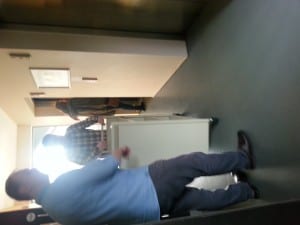
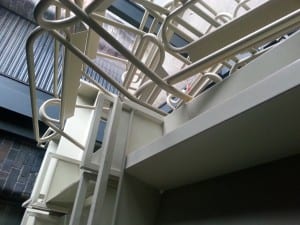
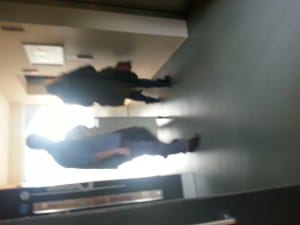
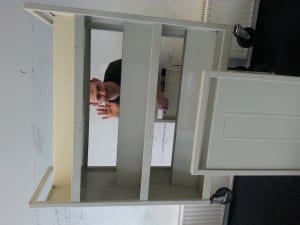
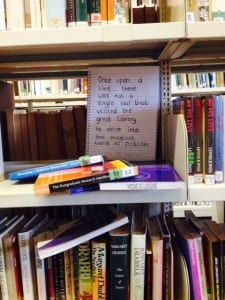
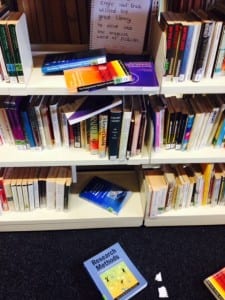
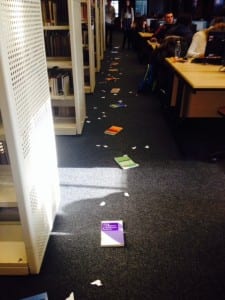
![photo[1]](https://sitespecific2015dhu.blogs.lincoln.ac.uk/files/2015/03/photo1-242x300.jpg)
![photo_1[1]](https://sitespecific2015dhu.blogs.lincoln.ac.uk/files/2015/03/photo_11-229x300.jpg)
![photo_3[1]](https://sitespecific2015dhu.blogs.lincoln.ac.uk/files/2015/03/photo_311-300x220.jpg)
![photo_2[1]](https://sitespecific2015dhu.blogs.lincoln.ac.uk/files/2015/03/photo_211-219x300.jpg)
![photo_4[1]](https://sitespecific2015dhu.blogs.lincoln.ac.uk/files/2015/03/photo_411-300x195.jpg)
![photo_4[1]](https://sitespecific2015dhu.blogs.lincoln.ac.uk/files/2015/03/photo_41-190x300.jpg)
